Exploring the south part of Cyprus
A very close friend of mine offered me to go and visit Cyprus as a part of our vacation and I couldn’t say no to her. Thus, after planning for a bit our vacation we set the dates, bought the plane tickets and went there for a couple of days. Our initial plan was to rest a lot there, sunbath and go on occasional walks, but we got pretty interested in what the island had to offer, so we decided to explore it a bit more.
Cyprus is an island country that is home to many cultures, rich history, customs and religions. That is why the island is so diverse in each part and never cease to surprise its visitors. In the beginning, the island was inhabited by the ancient Greeks, then it was ruled by Egyptians, Persian and eventually Alexander the Great took control over the island. Going further in time, even the great Venetian merchants took over the island along with some French knights, but eventually, it was taken by the Ottoman Empire during its reign. All of these nations contributed to the diverse culture and history of the island making it a truly remarkable place. Honestly, when I got to know all of this I was quite surprised as I did not know a lot about the country.
Today, Cyprus is an autonomous country but is divided into two parts – a Greek south part and a Turkish north part. That is why while you are there you might hear both Turkish and Greek language, but most of the people there know English, so there is no language barrier.
How to get to Cyprus?
The easiest and fastest way to go to Cyprus is by plane. There are two airports, one of them is in Paphos, in the south of the island and the other one is in Larnaca, in the north of Cyprus. The plane tickets are not that expensive and can be quite cheap and most of the low-cost airlines operate on both airports thus it is not going to cost you a lot. The prices are even lower if you go there during the off-season, which will be the perfect time to go there, as it will be sunny and hot enough for you to sunbathe.
Food and drinks in Cyprus
The food in Cyprus is simply fantastic! When we were there, we tried to enjoy every bit of it, as it was so tasty that it is almost impossible to say no. One of my favourite appetizers is the grilled Halloumi cheese, which is a mix of sheep and goat cheese, but is so soft and tasty that you will lick your fingers for sure. Another delicious appetizer is the Cypriot Meze, which is a group of small dishes served at once. However, it can vary in every part of Cyprus, thus you can always be surprised.
My favourite meals in Cyprus are the kebabs, which are wraps with the meat of your choice, fresh vegetables and tzatziki sauce. Another meal that I liked very much was the Moussaka, which is a meal made out of layers of eggplant, layers of potatoes, some minced meat and all of this is covered in sauce béchamel, which is absolutely delightful. Sometimes, they serve the Moussaka with some vegetables on the side, which is a great addition to it.

However, if you want to try some typical Cypriot drinks, then you should ask for Zivania, but I would advise you to be very careful with this alcoholic drink, as it is very strong. It is made out of grapes and it can be around 45% of alcohol. Thus, be careful with it, especially in the hot sunny days.
On the other hand, the coffee in Cyprus is always a refreshing option even if it is hot outside. You can even get an iced coffee, which would be the best option, and was my favourite drink there. If you want to get some coffee home you can buy the Charalambous coffee, but have in mind that it is made in a slightly different way and you will need a coffee pot. However, I bought a pack of this coffee and I have to say that it was quite amazing and rich in taste, so it was absolutely worth it.
First day in Cyprus and things to do in Paphos
Paphos is known as the birthplace of Aphrodite or Venus, as it was named by the Romans. As the legend goes, Aphrodite emerged from the sea foam carried out by sea creatures and ascended at the coast of Paphos. And the rest is history, so me and my friend decided to spend some time in Paphos, as we were staying in the city. I still remember that Paphos was full of people everywhere and was quite lively and noisy. However, it was still a very nice place to go for a walk and explore its landmarks around. Consequently, we decided to explore its historical landmarks that were quite famous for its well-preserved mosaics that were one of the oldest in the world.
Tombs of the Kings
First, we decided to visit the Tombs of the Kings, which were a bit further from the center, but we decided to walk there. Once we got there, we bought a combined ticket for the Kato Paphos archaeological park and the Tombs of the Kings, which cost us 7 euros in total.
The Tombs of the Kings was a huge desert-like place where the tombs of the most important aristocrats were gathered. Most of the tombs there were quite huge and were built around the third century before the birth of Christ, thus they were pretty ancient.
Exactly at the beginning of the park, there was a huge stone tomb that had stairs going down in it, which was leading you to a big hall where the aristocrats were put to lay for eternity. Then, going further into the park we ended into a huge open field overlooking the Mediterranean Sea, which was quite windy, but still hot. There were gathered most of the famous tombs that even were built to resemble the houses of the people. In some of them, there were wells, which were filled with water, so that the ancient citizens of Paphos could perform the funerary ceremonies. It was also very interesting that all of the tombs had staircases that were leading to the underground homes of the aristocrats.
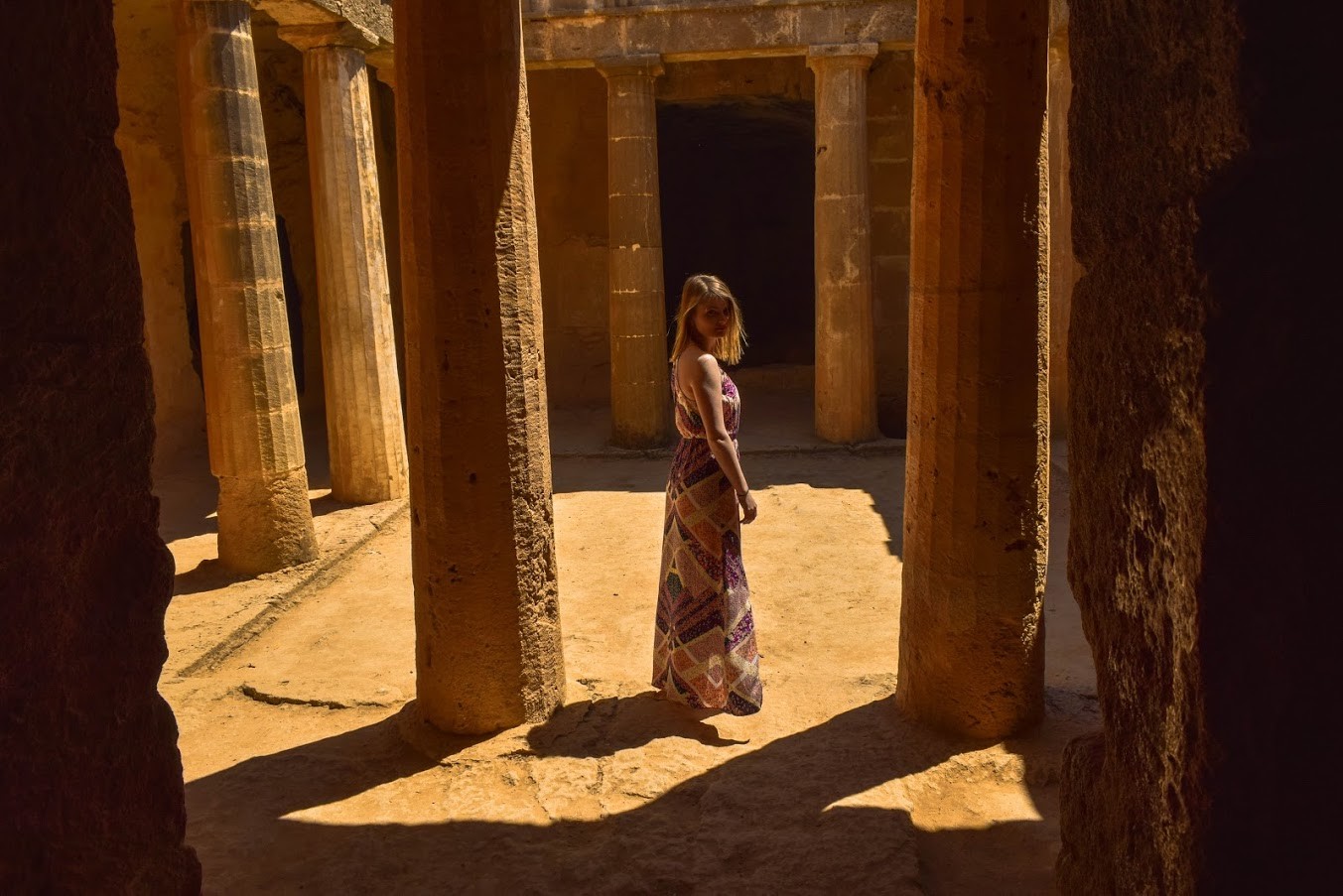
However, one of the most famous and well-preserved tombs was Tomb number 3. You will easily recognize it, as it is the only one that has very well-preserved columns and a couple of big chambers on its sides. It is considered that it was built for a very wealthy aristocrat, as it is also the biggest tomb of all the tombs in the valley.
Seeing this valley was quite a nice experience, especially if you are interested in ancient history and excavations as me. However, we decided to continue further to the next archaeological park in Paphos.
Kato Paphos Archaeological Park
After walking for around half an hour we reached the Kato Paphos archaeological park and entered with the combined tickets we bought at the Tombs of the Kings. The archaeological park was as well spread around a huge desert-like valley next to the sea and started with the House of Aion, which is the most famous building there, as it keeps one of oldest Roman mosaics in the world dating back to the fourth century. When we entered the house we saw one huge mosaic, which was representing an ancient scene of the birth of Dionysus and his procession, as well as scenes that included Nereids and Apollo. Honestly, the mosaics were quite well-preserved and were also very rich in colour and details.
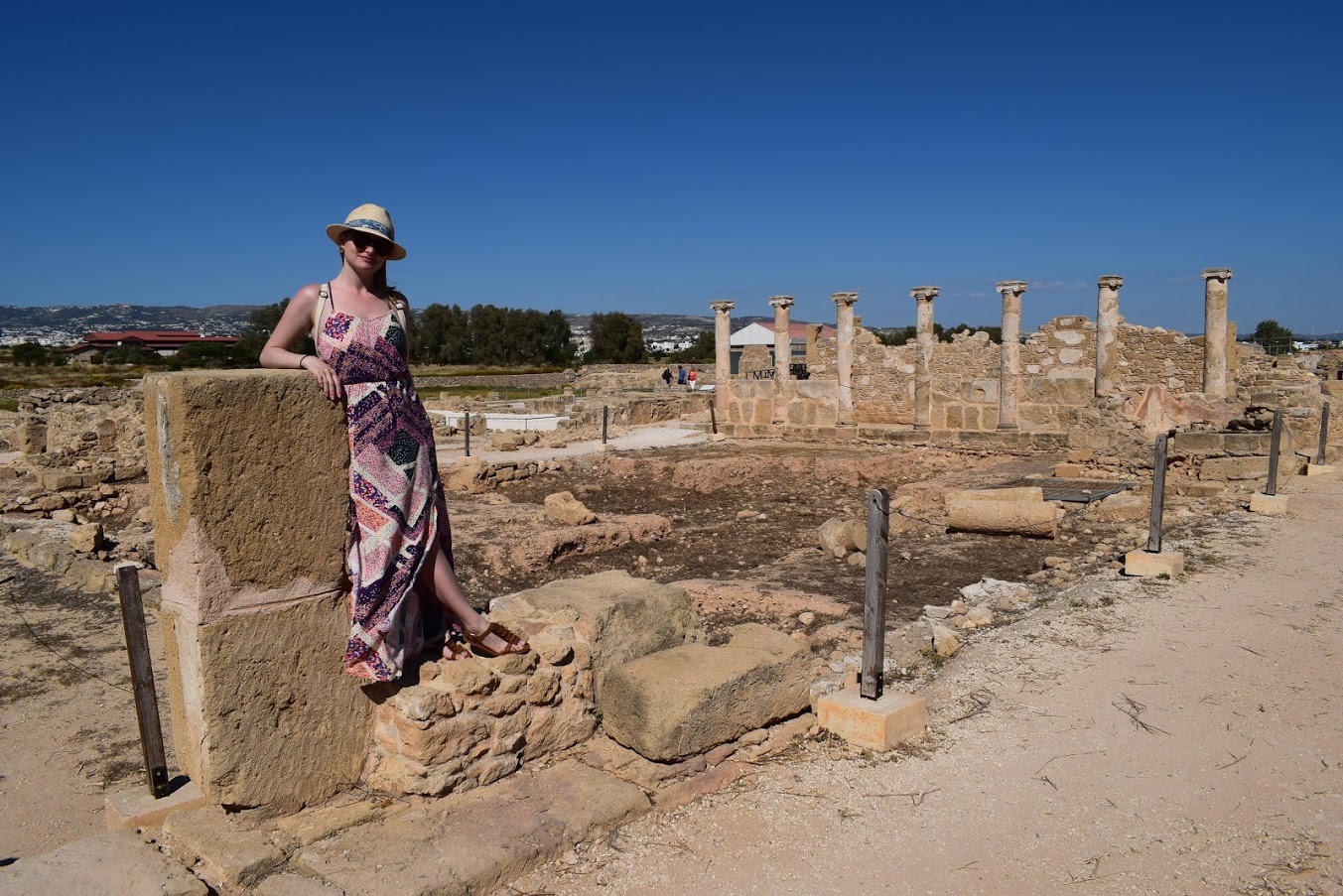
Then, we continued to the House of Theseus, where only the seven columns to its entrance were left standing. The villa was belonging to a Roman council that were living here around the second century and it was being inhabited for the next couple of centuries too. However, it was named the House of Theseus as there is a mosaic showing Theseus fighting the minotaur, thus this is the reason for its name. the villa was quite huge and as I could see it had a couple of buildings around it that were more like buildings for the personnel of the council or where the resources of the house were kept. Anyway, even though it was ruined and there was nothing left of it, I could still see that it was a quite glorious villa back in the days.
Then, there was the theater of the park, which was absolutely destroyed, but I could still see a part of the seats that were there. Going further into the park there was the Odeon, which was quite well-preserved and was mainly used for musical performances, recitals and speeches. Just above it was the Lighthouse of Paphos to which we could easily go, but it was so windy that we decided to just sit at the Odeon and rest for a bit before we go to explore the marina of Paphos.
Paphos Marina
Right after we exited the Kato Paphos archaeological park we headed to the harbour of Paphos where there was one last landmark we wanted to visit. It was the Castle of Paphos, which had a very rich history to present to us. The entrance to the castle was 2.50 euros and it was easily accessible by the stairs. The castle had big spacious rooms that resembled mostly prison cells and this is no surprise, as it was mainly used as a prison, a fortress and a warehouse. However, at the top of the castle, there was a very nice view overlooking the city and the Mediterranean Sea, which was quite mesmerizing.
Second day in Cyprus and things to do in Limassol
On our second day in Cyprus, we decided to go to the nearby city of Limassol. Thus, we went to the bus station in Paphos and from there we bought a one day ticket to Limassol, which usually costs 7 euros, but for students, there is a discount of 50% after presenting a valid student card. The ride to Limassol took around an hour and the bus stopped near the Old Port of Limassol from where our trip started.
Old Port of Limassol
We entered through the old port of Limassol, which was not that big and led us to the new marina of the city that was quite fancy, full of boats and many houses built in the sea. To me, it looked like a little Venice, especially with its canals that connected the houses with the land. There were also little waterparks and colourful streets leading to something like a separate city by the sea. Eventually, we decided to sit at café Nero, which was overlooking at the marina and was a quiet peaceful place to start our morning.
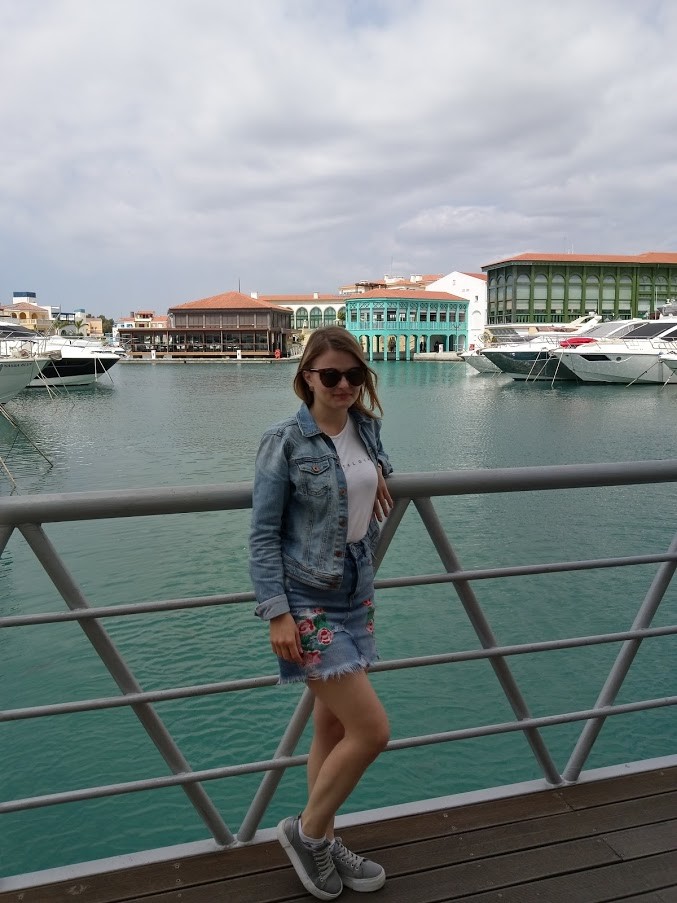
Then, we continued to the Limassol Castle, which was closed, thus we could not go inside, but we could find some information about it outside and just walk around it. The castle was built by a French knight and was mainly used as a fortress rather than as a castle. It was destroyed a couple of times, but it was later rebuilt and used as the safest place in the city.
Molos Seaside Park
After that, we decided to go to the seaside park in the city for a walk. The park was quite nice and had a huge garden with one of the tallest palms I have ever seen. In the park, there were even a Skate park where the kids were playing and a very nice huge fountain in the beginning. A bit further there was a very nice area built in the sea where one could sit and enjoy the serenity of the Mediterranean Sea.
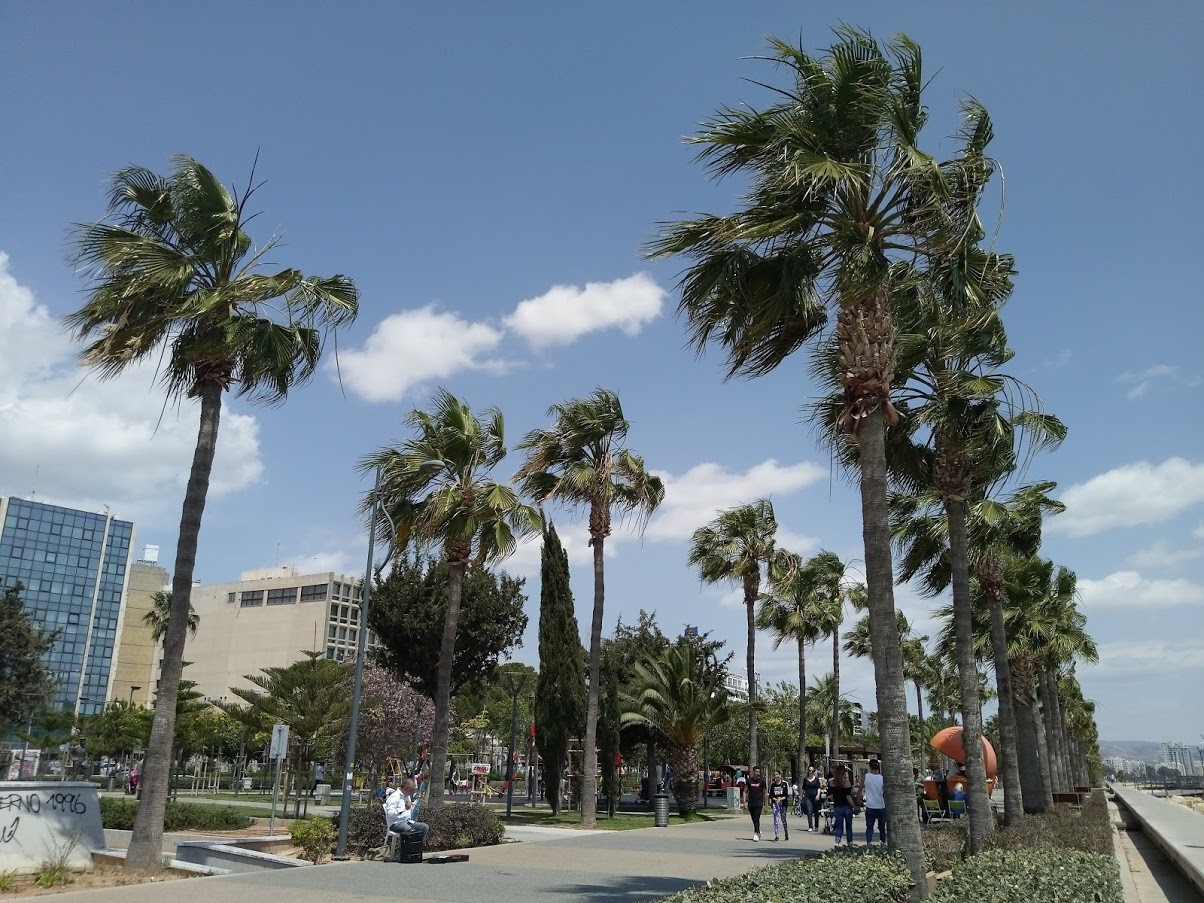
However, after the park, we decided to go up the streets where we found the creative districts of Limassol. It was full of nice cafes and restaurants that were painted in various colours and some of them even had hand-painted pictures on the walls that were absolutely amazing.
Ayia Napa Cathedral
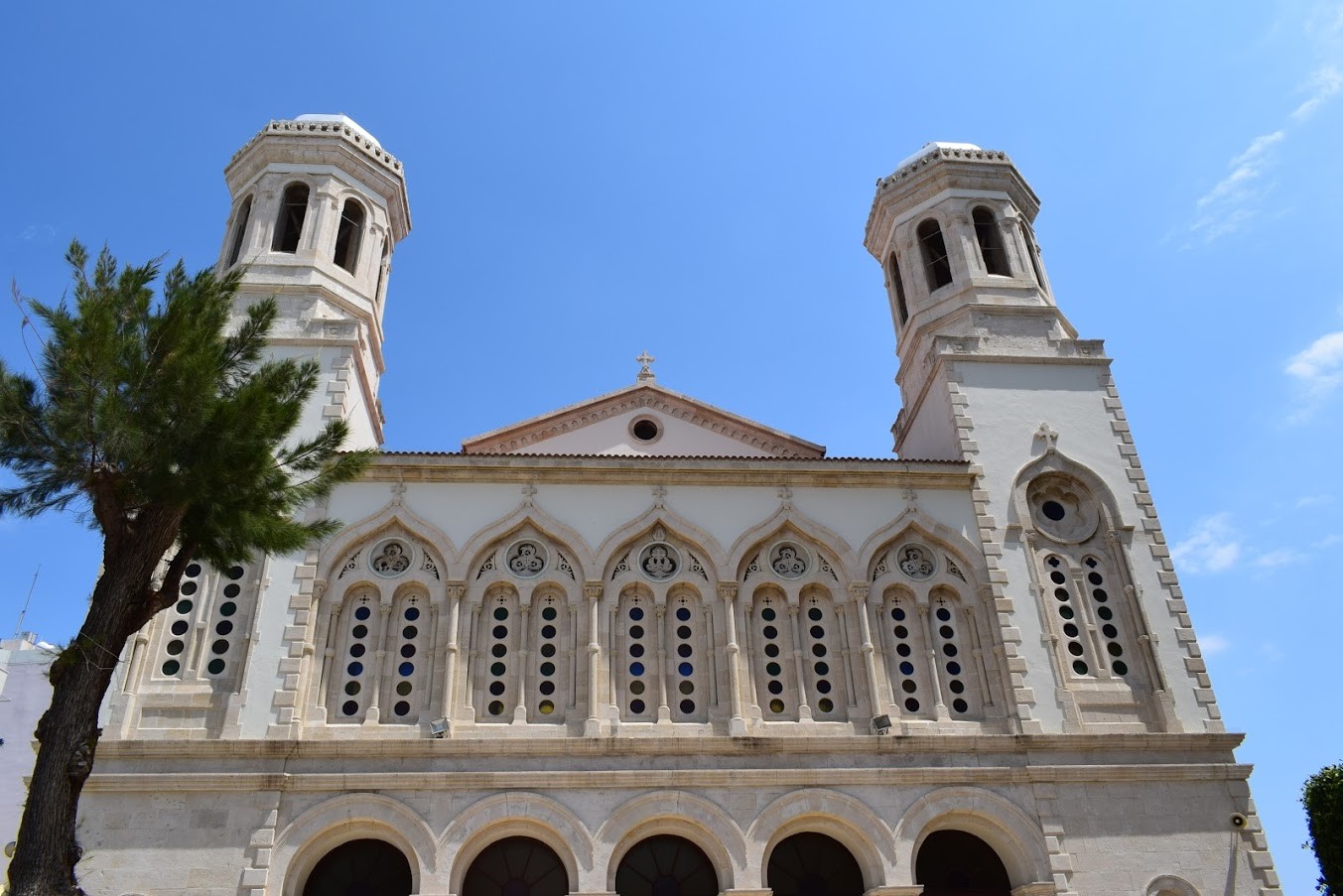
Eventually, we ended at the Ayia Napa Cathedral, which was built in a quite different architectural style I have not seen before. The cathedral was built around the nineteenth century over the ruins of an older church and its architectural style is considered to be a Byzantine one. Inside the cathedral is very beautiful and spacious, it has a beautiful altar with frescoes in bright colours depicting different biblical scenes. Outside in the garden of the cathedral, there was a very beautiful white shrine that was only adding to the beauty of the cathedral.
Photo gallery
Content available in other languages
- Español: Explorando el sur de Chipre
Want to have your own Erasmus blog?
If you are experiencing living abroad, you're an avid traveller or want to promote the city where you live... create your own blog and share your adventures!
I want to create my Erasmus blog! →









Comments (0 comments)